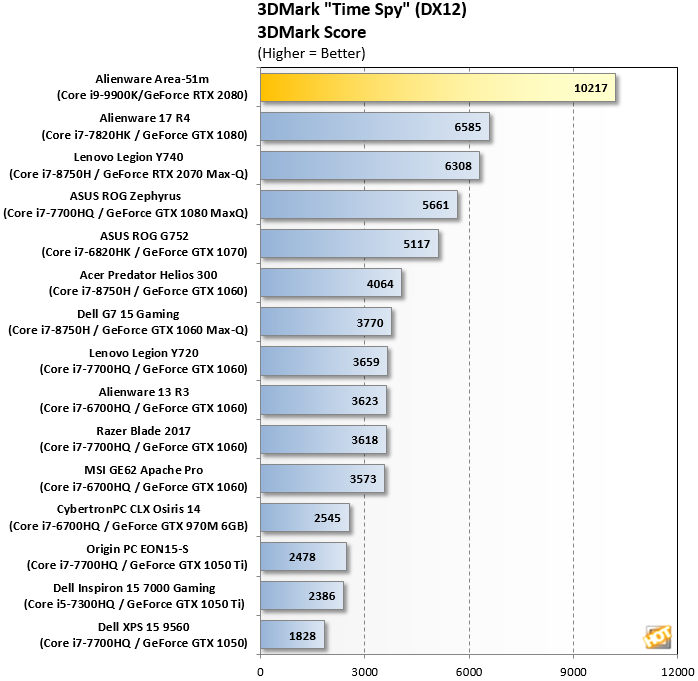Next we ran PCMark 10, which simulates real-life productivity, content creation and consumption scenarios by testing several common applications. This is a trace-base benchmark that employs specific, real software applications and workloads.
 |
| Futuremark PCMark 10 Benchmark |
| Content Creation And Productivity Tests |
|
As you might have expected, while the Area-51m is notably faster than other laptops, both gaming and mainstream, when it comes to office productivity tasks, where the machine really stretches its legs is with content creation. Here the machine pulls a commanding 75% lead over the average gaming notebook with a 6-core 8th Gen Intel processor.
 |
3DMark Fire Strike Extreme And Time Spy
|
Synthetic DirectX Gaming And Graphics Testing
|
|
3DMark is a synthetic GPU benchmark that stresses graphics processors to their limits. 3DMark also supports both DX11 and DX12 rendering engines, which makes it excellent for testing performance on current and next-gen games.

Our 3DMark Time Spy scores will mark the last time you'll see us compare the Alienware Area-51m to standard gaming notebooks in this review. The fight, especially with previous generation GeForce GTX 10 series GPUs on board some of these machines just isn't fair. We will, however, toss in a new GeForce RTX 2070 Max-Q powered gaming notebook into the mix next, along with our desktop GPU test bench system.

Port Royale is a new addition to Futuremark's 3DMark suite of benchmark that's specifically targeted at measuring system performance while handling ray traced graphics workloads. Here, versus our 18-core Intel Core i9-9980XE desktop GPU testbed and a GeForce RTX 2080 GPU, the Alienware Area-51m puts up another strong showing, especially when you consider its next closest laptop counterpart at the bottom of this chart.









